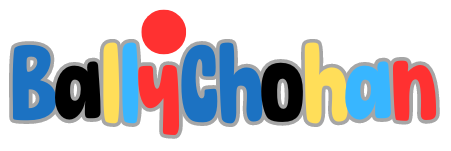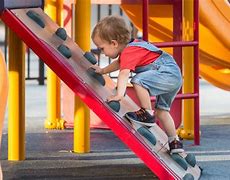How To Support Physical Development In Children Through Play
Play is a vital part of a child’s growth. It’s not just fun, it’s how they learn and develop their abilities. It allows them to grow their body, mind, and emotions in a healthy and fun way.
The Importance of Play in Child Development: A Foundation for Growth
Playing is essential for kids. It’s how they learn, grow, and become more independent. It’s through play that they develop their physical skills, their ability to think and solve problems, and how they interact with others. It’s a natural part of their development.
Benefits of Play for Physical Development: Building Strong Bodies
Play is a key element in building a child’s physical skills. It helps them develop their muscles, coordination, balance, and motor skills, all crucial for their movement and everyday life.
Strong Muscles, Improved Coordination, and Enhanced Balance
Through running, jumping, climbing, and throwing, kids improve their muscle strength. They learn to coordinate their movements, and they develop their balance. These skills are important for everything from walking and running to playing sports and performing daily tasks.
Developing Motor Skills: A Foundation for Movement
Play helps kids develop their motor skills, the abilities that control their movement. Gross motor skills, like running and jumping, help them with larger movements. Fine motor skills, like drawing and building, help them with smaller movements, using their hands and fingers.
Types of Play That Promote Physical Development: Engaging Kids in Active Fun
There are lots of ways kids can get active through play. These types of play encourage movement and help them develop their physical skills.
Active Play: Letting Loose and Having Fun
Active play involves moving the body and getting the heart rate up. This could be anything from running around the playground to playing tag, jumping rope, or having a dance party. It’s a great way for kids to burn energy, get their muscles working, and have fun.
Outdoor Play: The Benefits of Fresh Air and Exploration
Outdoor play offers a wealth of opportunities for physical development. It encourages kids to move, explore, and use their imagination. Climbing trees, building forts, playing in sandboxes, and riding bikes are just a few examples of how kids can develop physically while having fun outdoors.
Structured Games: Learning Through Organized Play
Structured games, like team sports, help kids learn to follow rules, work as part of a team, and develop their physical abilities. These activities can be a fun way for kids to build their skills in a structured environment, while learning to cooperate and compete.
Creating a Playful Environment: Encouraging Active Play
Parents and educators play an important role in creating an environment that encourages active play.
Providing Opportunities for Play:
Make sure there are spaces for kids to run around, climb, build, and explore.
Encouraging Movement:
Show kids how fun it is to move by joining in the play and being active with them.
Providing a Variety of Play Opportunities:
Offer a range of activities, from structured games to free play, to keep things interesting and engage different skills.
The Power of Movement and Exploration: Developing Gross Motor Skills Through Play
Gross motor skills, which involve using large muscle groups for movement, are developed through activities like running, jumping, climbing, and throwing.
Running, Jumping, and Climbing: A Foundation for Movement
Running, jumping, and climbing not only help kids improve their strength, coordination, and balance, but they also help them develop their spatial awareness, understanding their body in space, and the ability to move safely and efficiently.
Throwing: Developing Hand-Eye Coordination
Throwing a ball or playing catch improves hand-eye coordination and develops arm strength, both important skills for a wide range of activities.
Fine Motor Skills Development Through Play: Enhancing Precision and Dexterity
Fine motor skills involve using the small muscles in the hands and fingers for precise movements. Play can help develop these skills in lots of ways.
Building, Drawing, and Crafting:
Activities like building with blocks, drawing, coloring, or using playdough help kids improve their hand-eye coordination, their ability to manipulate objects, and their understanding of shapes and sizes.
Puzzles and Games:
Puzzles and games, like jigsaw puzzles or board games, can also help develop fine motor skills by encouraging kids to use their fingers and hands to move and manipulate pieces.
Incorporating Physical Activity Into Daily Routines: Making Movement a Habit
Physical activity doesn’t have to be limited to playtime. It can be incorporated into daily routines to make movement a habit.
Walking or Biking to School:
Instead of driving, encourage kids to walk or bike to school. It’s a great way to get some exercise and fresh air.
Taking Breaks to Move:
Make sure kids get up and move around during their day.
Choosing Active Activities After School:
Encourage kids to participate in active activities after school, such as sports, dance, or martial arts.
The Role of Imagination and Creative Play: Unleashing Creativity and Physical Expression
Imaginative play is a fantastic way for kids to express themselves physically. It allows them to use their bodies to create stories, explore different characters, and move in unique ways.
Pretend Play:
Pretend play encourages kids to use their bodies to express their imagination. This could be anything from playing house to being superheroes or animals.
Dramatic Play:
Dramatic play helps kids explore different roles, emotions, and movements. This can involve acting out scenes, creating stories, or simply playing pretend.
Play as a Tool for Social Development: Building Communication and Cooperation Skills
Playing with others is an important part of a child’s social development. It helps them learn to communicate, cooperate, and build relationships.
Sharing and Taking Turns:
Sharing toys, taking turns, and working together on projects all help kids learn to cooperate with others.
Solving Conflicts:
Playing with others can also help kids learn to resolve conflicts peacefully, by negotiating, compromising, and finding solutions.
Building Relationships:
Play is a great way for kids to build relationships, make friends, and learn to interact with others in a positive and fun way.
Conclusion: The Power of Play
Play is an essential component of a child’s development. It provides a foundation for physical, cognitive, and social-emotional growth. By incorporating playful activities into children’s lives, we can nurture their physical skills, ignite their imaginations, and foster a lifelong love of movement and exploration. By understanding the benefits of play and creating opportunities for children to engage in active play, we can empower them to reach their full potential.
FAQ:
Q: What if my child doesn’t like to play outside?
A: Some kids are more drawn to indoor activities. Try finding ways to bring outdoor activities indoors. Maybe set up a mini obstacle course in the living room, or play a game of hide-and-seek in the house.
Q: How much physical activity do children need each day?
A: According to the American Academy of Pediatrics, children aged 3-5 need at least 60 minutes of physical activity every day, and children aged 6 and older need at least 60 minutes of moderate-to-vigorous physical activity each day.
Q: What are some examples of moderate-to-vigorous physical activity?
A: Examples of moderate-to-vigorous physical activity include:
- Running
- Swimming
- Jumping rope
- Biking
- Team sports
- Dancing
Q: How can I make play more engaging for my child?
A: You can make play more engaging by:
- Providing a variety of toys and activities.
- Joining in the play with your child.
- Encouraging your child’s imagination.
- Being patient and allowing your child to lead the play.
- Creating a safe and stimulating environment for play.
Q: What are some signs that my child may not be getting enough physical activity?
A: Signs that your child may not be getting enough physical activity include:
- Low energy levels
- Difficulty concentrating
- Poor sleep habits
- Excessive weight gain
- Lack of interest in physical activities
Remember, play is not just fun; it’s crucial for a child’s development. By creating opportunities for play and encouraging physical activity, you can help your child grow into a healthy, well-rounded individual.

